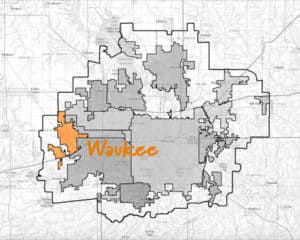In Selling Your Home, Part 2, I reviewed how to show your home, and how to receive and negotiate offers. The final part of selling your home will cover inspections, appraisals, loan commitments, and the fun part: closing!
Inspections
So now that you have a purchase agreement with a buyer for your home, it’s time for the inspection phase. The buyer will specify in the purchase agreement whether they will perform an inspection (almost all buyers will do this), and how long they have to send you requests arising from the inspection. Here in Iowa, the buyer will usually perform one or more of the following inspections:
- Home Inspection: This is a general inspection where the property inspector will review your house for any safety or structural concerns or any required fixes that will cost $500 or more.
- Sewer Inspection: The sewer line inspector will run a camera into the sewer line, looking for bellies, tree roots, or other issues, all the way to the street.
- Radon Inspection / Test: Radon is a naturally occurring radioactive gas that may cause lung cancer. Buyers may pay for a monitor to be placed in the home for ~48 hours to check if the radon levels are within an acceptable range.
“Specialized” Inspections: This can include specialists looking at particular areas, such as the roof or foundation.
In general, the buyers pay for the inspections directly to the companies performing the work, at the time of inspection. The buyers’ agent will schedule the time for the inspections ahead of time and will normally try to have the sewer and home inspections scheduled for the same time to minimize disruption to you, the seller. During the inspection(s), you should not be home; this is the time for the buyers to meet with the inspectors directly.
After the inspections are performed, the buyers will let you know if they are requesting any repairs based on the inspection. The buyers may or may not share the entire inspection report; you may request to see portions relating to any repairs requested. You now have the choice to either agree to repair all items requested, decline to repair the items, or offer other solutions. Keep in mind that in some cases, once you’ve been notified of items needing repair, you may need to change your seller disclosure if you do not move forward with the buyers in question. In any case, work with your agent to determine the appropriate response to any inspection requests.
Appraisals
After the inspection phase is over, the buyers’ lender will schedule an appraisal. The appraisal will also be scheduled through your agent, and it’s best not to be home when the appraisal is scheduled. The appraisal is an assessment of the value of your home and must be high enough for the lender to loan the buyers the money to purchase your home.
At the same time, your listing settlement company will schedule a termite inspection. This inspection looks for any visible signs of wood-destroying pest damage or current wood-destroying pest infestations. You as the seller will pay for this inspection, but not until closing (it will be taken out of your proceeds at that time).
Loan Commitment
In the meantime, the buyers’ lender will be reviewing their documents in order to provide a written loan commitment. The buyers will have submitted pay stubs, taxes, bank statements, and other proof of income and funds in order to be underwritten for the loan. The appraisal is also used to provide the loan commitment from the lender. You and your agent will not see any of these documents, but the lender will provide updates as to the loan status to your agent on a regular basis.
Closing!
Right before closing, the buyers’ agent will schedule a final walkthrough for the buyers. This is normally done after you’ve moved out of your home and allows the buyers to confirm that the home is still in the same condition as it was during the inspection. In general, if you’ve kept your home in good repair, there is no need to worry about the final walkthrough.
Finally, you get to the closing table! For sellers, closing is much easier than for buyers. You can sign documents ahead of time, with your agent or with a transaction coordinator. These documents can include the general warranty deed, the declaration of value statement, the groundwater hazard statement, and the closing disclosure, among others. The Closing Disclosure statement specifically will show the purchase price of the home, all closing costs (both a lump sum and split out), and then the net proceeds you can expect to receive.
Your agent will remove the sign from your yard, take the lockbox off your door, and take the key from the lockbox. The agent will then deliver the key and the original signed documents to the office where closing is taking place. The buyers will receive the key only after they have signed all the required documentation on their side. Assuming that the buyers have asked to take possession of the house upon closing, the house is now no longer yours.
Any proceeds you are receiving will most likely be in the form of a cashier check. Your agent will plan for you to receive this check; if you are buying a house, you can then take these proceeds to your purchase closing as well.
Congratulations! You’ve now sold your home!



